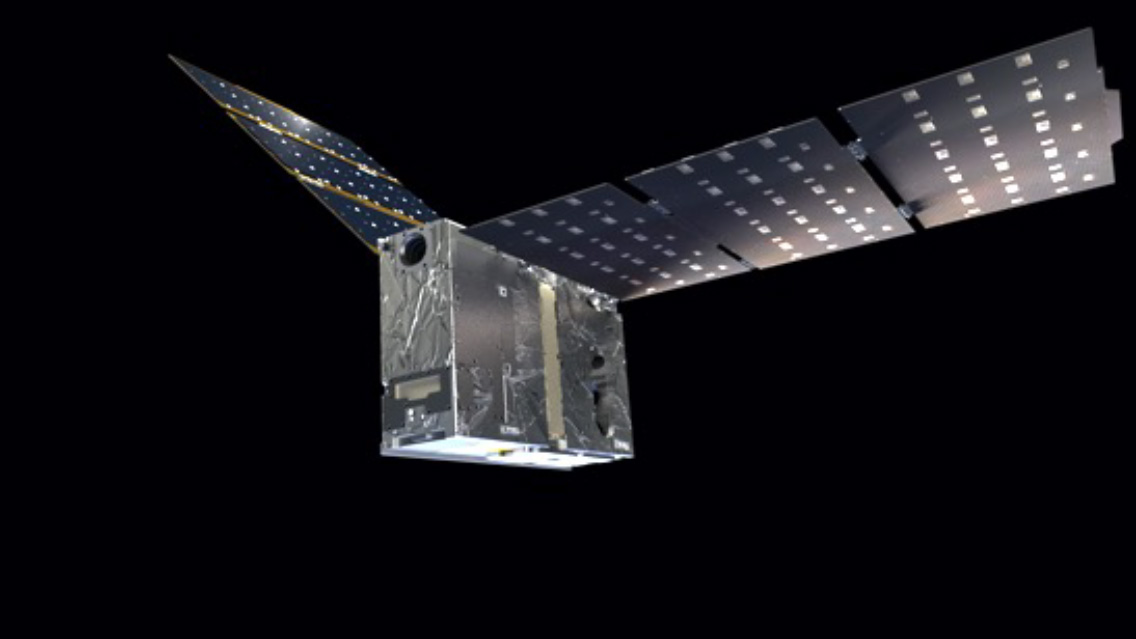Significant Technology Heritage in EZIE Heliophysics Mission

Artist’s rendering of an EZIE satellite. (Credit: JHU-APL)
The Electrojet Zeeman Imaging Explorer (EZIE) mission, selected in 2020 by NASA’s Heliophysics Science Division and set to launch in 2024, will explore the electric currents in Earth’s atmosphere that link the aurora to the magnetosphere. Led by the Johns Hopkins Applied Physics Lab, EZIE will be comprised of three CubeSats, flying in formation and carrying payloads containing millimeter radiometers with high-resolution digital spectrometers. These payloads include substantial heritage from technologies originally developed through the Earth Science Technology Office (ESTO).
 The analog front ends of the EZIE radiometers are derived directly from the TEMPEST-D (TEMPoral Experiment for Storms and Tropical systems–Demonstration, PI: Steven Reising, Colorado State) CubeSat, an Earth Venture Instrument launched in May 2018 to demonstrate observations of cloud and precipitation processes.
The analog front ends of the EZIE radiometers are derived directly from the TEMPEST-D (TEMPoral Experiment for Storms and Tropical systems–Demonstration, PI: Steven Reising, Colorado State) CubeSat, an Earth Venture Instrument launched in May 2018 to demonstrate observations of cloud and precipitation processes.

The digital back ends were developed for use on the CubeRRT (CubeSat Radio Frequency Interference Radiometer Technology, PI: Joel Johnson, Ohio State) CubeSat, which also launched in May 2018 and demonstrated on-board, real-time Radio Frequency Interference (RFI) processing from space.
 The overall digital design is based on early work on an Agile Digital Detector (ADD) by Chris Ruf at the University of Michigan (who is also serving as the EZIE Deputy Project Scientist), through a 2004 award under the Instrument Incubator Program. The ADD has enjoyed widespread infusion and formed the basis for RFI detection on the Soil Moisture Active Passive (SMAP) mission. The ADD was also used on the Hurricane Imaging Radiometer (HIRAD), an airborne instrument that measures rain rate and ocean surface wind speed.
The overall digital design is based on early work on an Agile Digital Detector (ADD) by Chris Ruf at the University of Michigan (who is also serving as the EZIE Deputy Project Scientist), through a 2004 award under the Instrument Incubator Program. The ADD has enjoyed widespread infusion and formed the basis for RFI detection on the Soil Moisture Active Passive (SMAP) mission. The ADD was also used on the Hurricane Imaging Radiometer (HIRAD), an airborne instrument that measures rain rate and ocean surface wind speed.